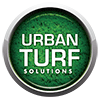Drainage and Backing Systems
When installing artificial grass, one of the most crucial elements to consider is the drainage and backing system. These components play a significant role in the functionality and longevity of your artificial lawn. A well-designed system will effectively manage water runoff, keep the turf dry and clean, and prevent issues such as waterlogging, bacteria growth, and unpleasant odours. This article aims to provide an understanding of the importance of drainage and backing systems and their role in maintaining the quality and durability of your artificial grass.
Drainage Systems
Artificial grass drainage works differently from natural grass. While natural grass absorbs some amount of rainfall, artificial grass is non-absorbent. This means all the water must pass through the turf into the underlying ground or be directed away from the area. Therefore, a good drainage system is essential to prevent pooling or flooding on the surface.
Drainage holes, typically perforations in the backing material, allow water to drain through the turf. These holes are often evenly spaced across the entirety of the backing material to facilitate uniform drainage. The size and spacing of these holes can vary, affecting the speed at which water drains away.
While the drainage holes in the turf handle water at the surface level, the underlying base is crucial for dealing with the water once it has passed through the turf. The base should ideally consist of a compacted layer of aggregates, such as crushed stone or gravel. This provides a firm and stable foundation while allowing excellent water drainage.
A slope or gradient can also be integrated into the base preparation to encourage water flow in a particular direction, especially useful in flat areas or places with poor natural drainage.
Backing Systems
The backing system of artificial grass serves multiple functions. Primarily, it holds the grass blades in place and gives the product its overall structure and stability. A quality backing system will ensure the artificial grass can withstand foot traffic, weather conditions, and the test of time.
Backing systems generally consist of two layers: primary and secondary backing. The primary backing is the material through which the grass blades are tufted or sewn. It’s typically made of a woven material that provides strength and stability.
Once the grass blades are secured into the primary backing, a secondary backing is applied. This layer provides additional stability and prevents the grass blades from coming loose. It’s usually made of a strong, durable material like latex or polyurethane.
Some manufacturers offer a permeable, non-absorbent secondary backing that enhances drainage capacity. These are particularly beneficial in heavy rainfall areas or installations like dog runs, where liquids need to be quickly and efficiently drained away.
A quality backing system not only supports effective drainage but also contributes to the overall durability and lifespan of your artificial grass. The right backing will resist degradation over time, maintain the integrity of the grass blades, and ensure the turf stays securely in place, even under heavy use or harsh weather conditions.
The Bottom Line
Drainage and backing systems are critical components of your artificial grass setup. They significantly impact the functionality, durability, and maintenance needs of your turf. Therefore, when choosing artificial grass, it’s essential to consider these aspects and check with your provider about the specifics of their products’ drainage and backing systems.
